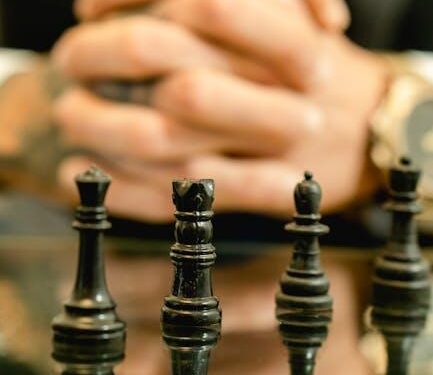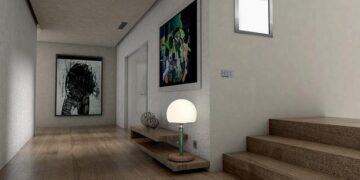Table of Contents
Introduction: More Than an Accessory
Among the enduring images of 20th-century sports, few are as instantly recognizable as Kareem Abdul-Jabbar peering through his protective goggles, poised to launch his signature skyhook.
For decades, this eyewear has been understood as a quirky, defining feature of the NBA’s all-time leading scorer.
Yet, to view the goggles as a mere accessory or a stylistic choice is to misunderstand one of the most significant artifacts in athletic history.
They were not a statement of fashion but a shield of necessity, a medical device born from a profound vulnerability that was inextricably linked to the very physical dominance that made him a legend.1
The journey of Abdul-Jabbar’s goggles—from a painful collegiate injury to a reluctantly accepted professional necessity, and finally to a symbol of cultural and philanthropic meaning—mirrors the complex, often underappreciated legacy of the man himself.
His career was a masterclass in quiet resilience, intellectual depth, and sustained greatness, qualities embodied by the protective gear he was forced to adopt.
This report will examine the genesis of the injuries that made the goggles essential, the specific medical condition that rendered them non-negotiable, the evolution of the eyewear’s design, Abdul-Jabbar’s personal and often conflicted relationship with them, and their lasting cultural imprint on the sport of basketball and beyond.
Part I: The Genesis of Injury: A Target in the Paint
The Paradox of Height and the Skyhook
Kareem Abdul-Jabbar’s offensive prowess was rooted in a combination of physical gifts and perfected skill that the league had never before witnessed.
Standing 7-foot-2, he possessed a slender frame that he leveraged for agility and speed.3
His primary weapon, the ambidextrous skyhook, was a fluid, high-arcing shot released at a point no defender could realistically reach, making it one of the most unstoppable moves in sports history.2
However, this unparalleled dominance created an inescapable occupational hazard.
Because his shot was virtually unblockable, defenders resorted to desperate, often clumsy, attempts to disrupt him.
Unable to reach the ball, their flailing hands and arms would frequently swat at his face and eyes.1
His towering height placed his eye level directly in the danger zone of opposing players’ hands.5
As former New York Knicks guard Walt Clyde Frazier noted, Abdul-Jabbar seemed to get swiped in the eye often, a predictable consequence of his physical advantage.7
The very attributes that made him a legendary offensive force also made his eyes a constant and vulnerable target.
His greatest strength was, paradoxically, the source of his most significant physical liability.
The First Warning – The 1968 UCLA Injury
The first clear indication of this unique vulnerability emerged during his celebrated collegiate career at UCLA.
In 1968, during his junior season, then-Lew Alcindor suffered a seriously scratched cornea during a game.8
The injury, which occurred in a game against the University of California, was severe enough to force him to miss the next two games, underscoring the threat it posed to his career even at this early stage.6
This was not an isolated incident; he sustained eye pokes in games against multiple opponents, including the University of Houston and USC, establishing a clear pattern of injury long before he entered the professional ranks.2
These events were the initial warnings that his eyes were a critical point of failure, a liability that would follow him into the NBA.
The Breaking Point – The 1974 Preseason Incident
For the first few years of his professional career with the Milwaukee Bucks, Abdul-Jabbar played without protective eyewear.
However, the recurring threat to his vision culminated in a pivotal and dramatic incident during the 1974 preseason.
In a game against the Boston Celtics, he was once again poked in the eye, suffering another scratched cornea.2
The cumulative frustration and pain from years of these injuries boiled over.
In a moment of intense anger, Abdul-Jabbar punched the basket support stanchion, breaking two bones in his right hand.5
This self-inflicted injury was a major setback, forcing him to miss the first 16 games of the 1974-75 NBA season.11
The incident served as a breaking point.
The combination of another serious eye injury and the severe secondary injury born from his frustration made it clear that a permanent solution was required.
Upon his return to the court, he was wearing protective goggles, a feature that would define his image for the rest of his career.2
Part II: The Medical Imperative: A Career on the Brink
Defining the Condition: Recurrent Corneal Erosion Syndrome
The repeated trauma Abdul-Jabbar sustained was not a series of independent injuries but the cause of a chronic and painful medical condition.
Years of being jabbed in the face led him to develop Recurrent Corneal Erosion Syndrome (RCE).3
RCE is a condition where the cornea’s outermost layer of cells, the epithelium, fails to properly adhere to the underlying Bowman’s membrane.14
Past trauma, such as the scratches Abdul-Jabbar repeatedly suffered, can weaken this bond.
As a result, the epithelium can easily tear or detach, often with minimal friction, such as the movement of the eyelid over the eye during sleep.14
This erosion exposes the cornea’s dense network of nerve endings, causing symptoms that include severe pain, intense light sensitivity (photophobia), blurred vision, and a persistent foreign body sensation.14
For Abdul-Jabbar, the scar tissue from the constant injuries caused his eyes to dry out easily, triggering these painful episodes.2
The condition was so severe that it caused him to miss games as late as December 1986, when his eyes dried out and swelled.3
A Non-Negotiable Necessity
Given the diagnosis of RCE, the goggles were not a preference or a precaution; they were a medical mandate essential for the preservation of his career.
In an era when on-court accessories were beginning to intersect with fashion, Abdul-Jabbar’s eyewear was purely a medical device, analogous to a knee brace for a player with ligament damage.
He never received medical clearance to play without them, a fact that underscored their importance.9
Abdul-Jabbar himself was unequivocal about their role.
“It certainly kept my career online,” he told the Times in 1994, adding, “If I hadn’t worn goggles, I would have retired early”.9
This stark admission reframes the iconic goggles entirely.
They were not a stylistic choice but the one piece of equipment that allowed one of the sport’s greatest athletes to continue playing, protecting him from a chronic condition that threatened to prematurely end his historic 20-season career.
Part III: The Evolution of the Icon: From Scuba Mask to Signature Look
The First Foray – The “Weird Aviator Goggles”
When Abdul-Jabbar returned to the court in November 1974 after his hand injury, his new eyewear was a far cry from the sleek design he would later popularize.
The initial pair was described as “weird aviator goggles,” resembling something a scuba diver might use.11
They were black-rimmed, bulky, and functionally flawed.13
While they offered protection, they came at a significant cost to his performance.
The cumbersome design severely restricted his peripheral vision, a critical sense for any basketball player, let alone a dominant center operating in a crowded paint.11
Abdul-Jabbar recognized the problem immediately.
After his first game wearing them, he told reporters, “I’ve got to get me another pair…
Wraparounds.
I can’t see people sneaking around near the hoop”.18
This initial experiment highlighted the challenge of finding equipment that could provide adequate safety without compromising elite athletic function.
The Definitive Model – The French Lucite Goggles
The search for a better solution led Milwaukee Bucks trainer Bill Bates to source a high-tech French model that would become Abdul-Jabbar’s signature look.11
Made entirely of clear lucite, these goggles featured oversized lenses and transparent, hinge-less frames stamped with “France – P.T. Pend.”.11
The design was completed with a beige rubber nose pad and an elasticized black headband to keep them secure.11
This model represented a crucial step forward in sports equipment design.
It successfully balanced the primary need for safety with the high-performance demands of a professional athlete.
The transparent, wraparound construction provided the necessary protection against errant fingers and pokes while preserving the vital peripheral vision Abdul-Jabbar needed to read defenses, pass out of double-teams, and dominate the court.
This evolution from a flawed “aviator” style to the iconic lucite model illustrates the practical engineering required to create truly effective athletic gear.
A Brief, Painful Interlude
Despite settling on a functional design, Abdul-Jabbar briefly attempted to play without his protective eyewear.
He abandoned the goggles during the 1979 NBA Playoffs and for the beginning of the subsequent 1979-80 season.3
The experiment was short-lived and ended painfully.
In an October 1980 game, he was accidentally poked in his right eye by Houston Rockets player Rudy Tomjanovich.3
This incident served as the final, definitive proof of the goggles’ necessity.
Forced to confront the persistent risk, he resumed wearing them and would continue to do so for the remainder of his career.
Part IV: The Man Behind the Goggles: A Reluctant Pragmatist
A Disliked Necessity
While the goggles became an iconic part of his public image, Abdul-Jabbar’s personal relationship with them was one of reluctant tolerance, not affection.
He consistently expressed a desire to play without them.
“I don’t like to wear them,” he stated in a 1980 interview.
“But when they tell me I can get rid of them, I will”.8
This sentiment reveals a sharp contrast between the public’s perception of the goggles as a cool, signature accessory and the private reality for the man who wore them: they were a constant, unwelcome reminder of his physical vulnerability and a source of discomfort he would have gladly shed.
The Pragmatic Acceptance
Abdul-Jabbar’s dislike for the goggles was tempered by a pragmatic and intellectual acceptance of their crucial role.
His character—known for being cerebral, disciplined, and deeply professional—was perfectly reflected in his approach to this challenge.
In 1974, after first adopting them, he offered a grimly witty acknowledgment of his situation: “I’ve got to conserve my eyeballs.
I’m down to my last pair”.18
Years later, his reflection that the goggles “kept my career online” demonstrates a clear-eyed assessment of their importance to his historic longevity.9
This internal dynamic—disliking the gear but wearing it out of disciplined necessity—is a window into Abdul-Jabbar’s fundamental character.
He was an athlete who prioritized long-term, sustainable greatness over short-term comfort or style.
This same discipline was evident in his pioneering dedication to a strict fitness regimen, including a year-round conditioning program and the practice of yoga to improve flexibility and durability.3
He was willing to endure a daily inconvenience for the greater goal of professional excellence, a testament to the focused mindset that defined his career.
Part V: The Cultural Imprint: A Legacy in Lucite
The Pioneer of Protective Eyewear
In the broader history of sports safety, Kareem Abdul-Jabbar stands as a reluctant but influential pioneer.
At a time when eye protection in basketball was rare, his high-profile adoption of goggles on the NBA’s biggest stage set a powerful precedent.10
Given that basketball is a leading cause of sports-related eye injuries in the United States, his example was particularly resonant and necessary.4
His use of goggles normalized protective eyewear and created a lineage of NBA players who followed his lead, whether due to injury, vision correction, or a combination of both.
He became a trendsetter, demonstrating that safety equipment did not have to be an impediment to greatness.20
This influence is visible in the generations of players who donned goggles after him.
| Player | Team(s) | Era of Use | Primary Reason for Eyewear | Notes/Legacy |
| Kareem Abdul-Jabbar | Bucks, Lakers | 1974–1989 | Injury (Recurrent Corneal Erosion) | The pioneer; made protective eyewear an iconic part of NBA culture.11 |
| James Worthy | Lakers | 1985–1994 | Injury (Scratched Cornea) | A teammate of Abdul-Jabbar; continued the Lakers’ goggle tradition after a 1985 injury.10 |
| Horace Grant | Bulls, Magic | 1990s–2000s | Vision Correction / Inspiration | Initially wore prescription goggles because he was legally blind; continued post-surgery to inspire kids.20 |
| Kurt Rambis | Lakers | 1980s | Vision Correction | Famous for thick-rimmed glasses with a retaining strap, a distinct but related style of eyewear.10 |
| Amar’e Stoudemire | Suns, Knicks | 2000s–2010s | Injury (Detached Retina) | A modern example of an All-Star whose career was preserved by protective eyewear after a serious injury.10 |
The Goggles as Cultural Shorthand
Over time, the goggles transcended their practical function to become cultural shorthand for Abdul-Jabbar himself, as inextricably linked to his identity as the skyhook.2
This was powerfully demonstrated at his farewell game, where NBA legends from both the Los Angeles Lakers and the rival Boston Celtics paid tribute by donning his trademark goggles, each attempting a skyhook in his honor.5
That moment cemented the goggles’ status as a symbol of respect for his entire career.
On a deeper level, the eyewear came to serve as a metaphor for the man.
Abdul-Jabbar was known for his quiet, intellectual, and sometimes reserved demeanor, which set him apart from the more gregarious superstars of his era.1
The goggles, a physical protective barrier, mirrored the public’s perception of him as a thoughtful, brilliant, and at times remote giant.
One writer perceptively connected the eyewear to his “brilliant, unrelatable mind” and his “choice to be alone,” viewing them as a symbol of a fundamental need to feel protected, both physically and perhaps psychically.1
The Enduring Symbol – From Court to Community
The final evolution in the meaning of Abdul-Jabbar’s goggles came decades after his retirement.
During the COVID-19 pandemic in 2020, he demonstrated a profound self-awareness of his own legacy by donating 900 pairs of safety goggles to frontline healthcare workers at UCLA Health and other medical centers.26
In announcing the donation, he explicitly referenced his own history, good-naturedly hoping the caregivers would “look as good wearing the goggles as he did”.27
This philanthropic act brought the object’s story full circle.
What began as a personal medical necessity, became a public symbol of an athletic career, and was ultimately repurposed by Abdul-Jabbar as a symbol of community protection and gratitude.
It was a powerful gesture that affirmed the enduring iconography of the goggles and the thoughtful character of the man who made them famous.
Conclusion: The Enduring Vision of an Icon
The reason Kareem Abdul-Jabbar wore goggles is a story of medical necessity, pragmatic discipline, and unforeseen cultural impact.
They were not a stylistic flourish but a non-negotiable shield against a chronic, painful condition that was a direct byproduct of his physical dominance.
The repeated eye injuries he suffered, culminating in Recurrent Corneal Erosion Syndrome, forced him to adopt protective eyewear as the only means to sustain his historic two-decade career.
He wore them reluctantly, a burden he accepted with the same intellectual focus and long-term vision that he applied to every aspect of his life and career.
In doing so, he inadvertently became a pioneer for eye safety in sports and created one of basketball’s most lasting images.
The story of the goggles is, therefore, the story of Kareem Abdul-Jabbar in miniature.
It represents the triumph of substance over style, resilience over vulnerability, and quiet, sustained excellence over fleeting flash.
Ultimately, the clearest vision the goggles provided was not just of the court, but of the unwavering focus of one of history’s greatest and most complex athletes.
Works cited
- NBA Accessories Week: Kareem Abdul-Jabbar’s protective goggles – FanSided, accessed August 5, 2025, https://fansided.com/2019/09/06/nba-accessories-week-kareem-abdul-jabbar-protective-goggles/
- There Is More To Kareem Abdul-Jabbar’s Goggles Than Meets The Eye – Grunge, accessed August 5, 2025, https://www.grunge.com/1061488/there-is-more-to-kareem-abdul-jabbars-goggles-than-meets-the-eye/
- Kareem Abdul-Jabbar – Wikipedia, accessed August 5, 2025, https://en.wikipedia.org/wiki/Kareem_Abdul-Jabbar
- Iconic Eyewear in Sports – Eye Centers of Florida, accessed August 5, 2025, https://www.ecof.com/famous-sports-eyewear/
- Why Did Kareem Abdul Jabbar Wear Goggles? – YouTube, accessed August 5, 2025, https://www.youtube.com/watch?v=ez59-4KAc0U&pp=0gcJCfwAo7VqN5tD
- Quora: Why did Kareem Abdul Jabbar wear goggles? – Trophy Lives – WordPress.com, accessed August 5, 2025, https://trophylives.wordpress.com/2018/06/04/quora-why-did-kareem-abdul-jabbar-wear-goggles/
- One of the reasons Kareem Abdul-Jabbar wore his goggles was to avoid getting swiped in the eye, as that seemed to happen often to him, according to Walt Clyde Frazier in the Knicks telecast. : r/nba – Reddit, accessed August 5, 2025, https://www.reddit.com/r/nba/comments/aidzvo/one_of_the_reasons_kareem_abduljabbar_wore_his/
- Kareem Abdul-Jabbar didn’t like wearing his goggles – Basketball …, accessed August 5, 2025, https://www.basketballnetwork.net/old-school/kareem-abdul-jabbar-couldnt-wait-to-get-rid-of-his-iconic-goggles#:~:text=Throughout%20his%20career%2C%20Los%20Angeles,pick%20of%20the%201969%20Draft.
- Kareem admitted he didn’t like to wear his iconic goggles – YouTube, accessed August 5, 2025, https://www.youtube.com/shorts/K_Lg8Vw7Esc
- Historic Moments in Sports Eye Protection – American Academy of …, accessed August 5, 2025, https://www.aao.org/eye-health/anatomy/sports-eye-protection-history
- 1983-85 Kareem Abdul-Jabbar Game Worn & Signed Goggles …, accessed August 5, 2025, https://sports.ha.com/itm/basketball-collectibles/others/1983-85-kareem-abdul-jabbar-game-worn-and-signed-goggles/a/50052-80331.s
- Harlem’s Kareem Abdul-Jabbar, 1947, accessed August 5, 2025, https://www.harlemworldmagazine.com/harlems-kareem-abdul-jabbar-1947/
- Kareem Abdul Jabbar and his goggles – Does LeBron James need them? – YouTube, accessed August 5, 2025, https://www.youtube.com/shorts/o-pD-H1GAH0
- Recurrent Corneal Erosion: Symptoms & Treatment – Cleveland Clinic, accessed August 5, 2025, https://my.clevelandclinic.org/health/diseases/recurrent-corneal-erosion
- Corneal erosions: Causes, symptoms and treatments – All About Vision, accessed August 5, 2025, https://www.allaboutvision.com/conditions/corneal-erosion/
- Corneal Abrasion and Erosion – American Academy of Ophthalmology, accessed August 5, 2025, https://www.aao.org/eye-health/diseases/what-is-corneal-abrasion
- Corneal Abrasion – StatPearls – NCBI Bookshelf, accessed August 5, 2025, https://www.ncbi.nlm.nih.gov/books/NBK532960/
- Kareem Abdul-Jabbar: Busting Out the Goggles, 1974 – From Way …, accessed August 5, 2025, https://from-way-downtown.com/2023/04/15/kareem-abdul-jabbar-busting-out-the-goggles-1974/
- 4 NBA Players Who Wore Glasses On and Off the Court – TalkBasket …, accessed August 5, 2025, https://www.talkbasket.net/186337-4-nba-players-who-wore-glasses-on-and-off-the-court
- Sports Glasses in the NBA: How Do They Work? – The Lead, accessed August 5, 2025, https://theleadsm.com/sports-glasses-in-the-nba-how-do-they-work/
- March Means Madness (Basketball) and Eye Injuries – Hopewell and Lambertville Eye Associates, accessed August 5, 2025, https://www.seelife.net/march-means-madness-basketball-and-eye-injuries/
- I miss goggles in the NBA, which NBA players should be required to wear goggles for ratings purposes – Reddit, accessed August 5, 2025, https://www.reddit.com/r/nba/comments/jjun5h/i_miss_goggles_in_the_nba_which_nba_players/
- Who are the best NBA players to wear goggles and glasses? #nba #ba… – TikTok, accessed August 5, 2025, https://www.tiktok.com/@nodunksinc/video/7320340772543352106
- Lakers News: Anthony Davis Explains Why He Won’t Wear Protective Eyewear, accessed August 5, 2025, https://lakersnation.com/lakers-news-anthony-davis-explains-why-he-wont-wear-protective-eyewear/
- Kareem Abdul Jabar: Much More than a Weird, Cool Dude – Sports and Spirituality, accessed August 5, 2025, https://sportsandspirituality.blogspot.com/2016/08/kareem-abdul-jabar-much-more-than-weird.html
- Lakers Legend Kareem Abdul-Jabbar Donates Safety Goggles to UCLA – Inside Hook, accessed August 5, 2025, https://www.insidehook.com/sports/kareem-abdul-jabbar-donates-goggles-ucla
- Kareem Abdul-Jabbar Donates Safety Goggles to Scripps Caregivers, accessed August 5, 2025, https://www.scripps.org/news_items/6933-kareem-abdul-jabbar-donates-safety-goggles-to-scripps-caregivers






